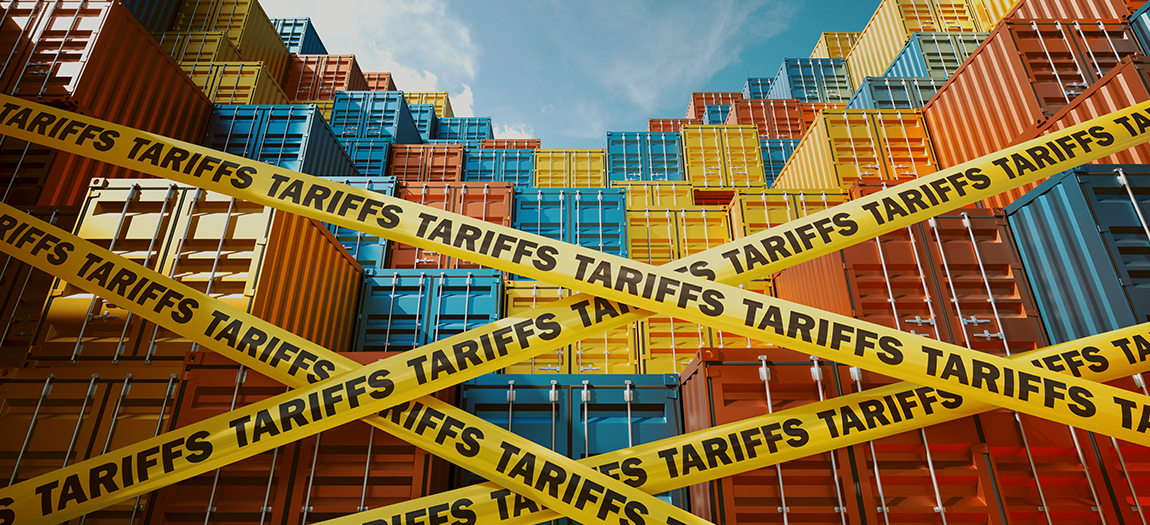How Policy Uncertainty Is Rewriting the Industrial Playbook

[Editor’s Note: The interviews for this article were conducted in mid-to-late May. Given the fluid nature of tariff-related policy and news, the insights and perspectives shared here reflect conditions and information available at that time.]
Trade policy, once the province of diplomats and think tanks, now shapes the daily calculations of industrial real estate developers and brokers along America’s Eastern Seaboard. In Miami, Charleston, and Nashville—three bellwether markets—tariffs and cost volatility are distorting project timelines, suppressing tenant commitments and dampening investor confidence.
Recently, three SIOR professionals spoke with SIOR about a market climate where hesitation has become the default and even modest plans are being second-guessed.
“Uncertainty breeds inaction,” said Ted Konigsberg, SIOR, principal of Infinity Commercial Real Estate in Miami.
“If you're under construction, you bring in every bit of material you can ahead of time. If you're still in permitting, you stop. That’s what we’re seeing all over the place.”
Konigsberg, whose firm consults for ports, infrastructure groups and developers across southeast Florida, sees a system under pressure from all directions. Input costs remain unstable. Labor is increasingly difficult to secure. And the tariff picture changes weekly.
“You can’t plan a project if you don’t know what it’ll cost,” he said. “Tariffs on steel, aluminum, rebar—none of it is stable.”
That cost instability has forced developers to pre-purchase materials far in advance, a tactic that only works if projects are already underway. If not, many sit idle. Konigsberg adds that even mid-negotiation, tenants are pulling out.
As the dust settles, the brokers and developers who adapt quickly—offering clarity in cloudy conditions—will be the ones best positioned to lead.
“I’ve lost tenants mid-negotiation because they just pulled back,” he said. “They don’t know what the cost of their widgets will be next quarter. So, they wait.”
Interestingly, multinational firms continue to move forward. “The global players—TSMC, Hyundai—are investing,” Konigsberg said. “They’re planning for five to 10 years out and building U.S. operations now. But smaller companies? They can’t make those moves with this much uncertainty.”
Middle Tennessee: Flexibility by Necessity
In Nashville, Tenn. the reaction to volatility is different but no less significant. Instead of pulling out, many tenants are reworking how they commit to space. Melissa Alexander, SIOR, managing director at Foundry Commercial, sees the shift up close.
“We’re seeing more three-year deals than we used to,” said Alexander. “Landlords who wouldn’t have considered short-term leases during COVID are open to it now. Everyone wants options—tenants want room to adjust, and landlords want to hold occupancy.”
Even in a region not directly reliant on port traffic, tariff effects ripple outward. Infrastructure shortfalls, delayed construction inputs, and wavering confidence from foreign manufacturers all contribute to a cautious tone.
“There’s been activity from Canadian and Mexican manufacturers, but they’re pausing,” Alexander said. “They don’t know what kind of long-term commitment makes sense. And infrastructure—power, sewer, permitting—is not always in place to support a manufacturing move.”
To get deals across the finish line, Alexander and her team are working with landlords to offer maximum flexibility. “We build it into the deal—termination options, sublease clauses, even portfolio migration if they outgrow the space,” she said. “That’s how we get tenants comfortable.”
Lowcountry Logistics: Ports and Pivots
Charleston’s port infrastructure makes it highly sensitive to global trade shifts. Simons Johnson, SIOR, of Bridge Commercial in Charleston, S.C., sees demand for bonded warehouses and foreign trade zones increasing—but not always converting into leases.
“There’s demand for bonded warehouses and foreign trade zones,” said Johnson. “3PLs are pivoting—selling space that gives clients a way to store goods and defer duties. But even with that, companies are hesitant. The risk still outweighs the reward for a lot of end users.”
That hesitation is creating a squeeze on storage space across port markets. “Bonded warehouses are scarce,” he added. “If you’re lucky enough to have one, people will come. But long-term commitments are rare right now.”
Johnson notes that the supply-demand balance has shifted. “When supply was tight, landlords called the shots,” he said. “Now, tenants can ask for shorter terms. Cash flow matters more than lease length now.”
Conclusion: Market on Pause
Across all three markets, the common theme is clear: tariff-induced uncertainty is distorting planning timelines, raising costs, and driving demand for flexibility. Developers and brokers alike are working harder to maintain momentum in deals.
Konigsberg flagged longer-term risks that go beyond real estate. “A trade war is a war,” he said. “If tariffs stay high or escalate further, it’s not just construction costs that rise—it’s consumer prices. That’s a tax on demand. If people can’t afford what you're building, everything slows down.”
Even as Miami’s top-tier office towers attract headlines, the strain shows elsewhere. “Class A product in great locations is thriving,” he said. “But what about the B building next door from 1985? Not so much. That’s the reality.”
Some in the industry are keeping a close eye on prefab and modular construction as potential cost-saving alternatives, especially if input prices keep climbing. “That may change if input costs keep rising,” said Konigsberg. “Anything that shortens build time and reduces waste is going to get a closer look.”
As the dust settles, the brokers and developers who adapt quickly—offering clarity in cloudy conditions—will be the ones best positioned to lead. “This isn't just about tariffs,” Alexander said. “It’s about how companies respond under pressure. And right now, the ones who can stay agile are the ones who will keep moving forward.”
CONTRIBUTING MEMBERS